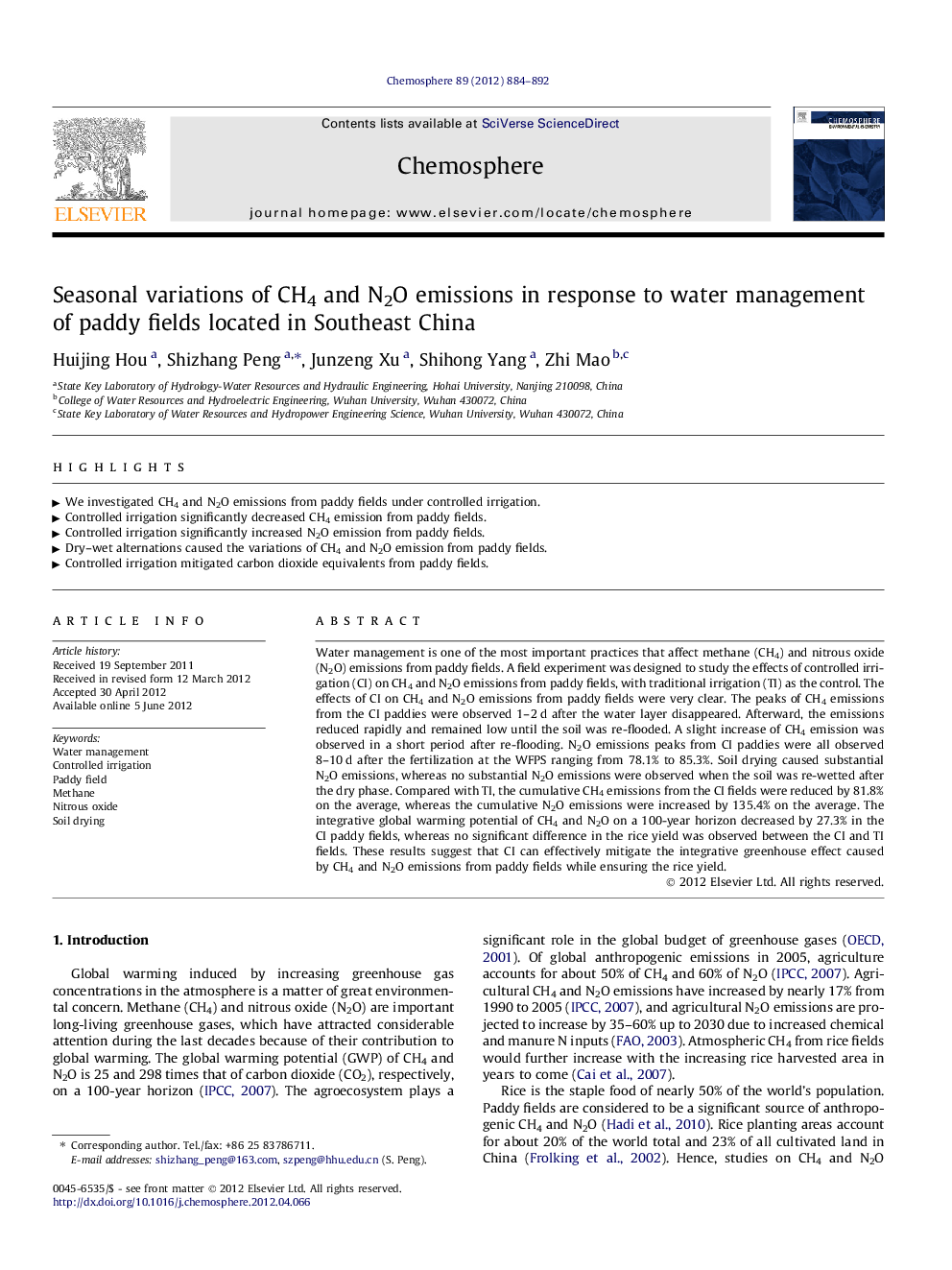| کد مقاله | کد نشریه | سال انتشار | مقاله انگلیسی | نسخه تمام متن |
|---|---|---|---|---|
| 4409961 | 1307519 | 2012 | 9 صفحه PDF | دانلود رایگان |

Water management is one of the most important practices that affect methane (CH4) and nitrous oxide (N2O) emissions from paddy fields. A field experiment was designed to study the effects of controlled irrigation (CI) on CH4 and N2O emissions from paddy fields, with traditional irrigation (TI) as the control. The effects of CI on CH4 and N2O emissions from paddy fields were very clear. The peaks of CH4 emissions from the CI paddies were observed 1–2 d after the water layer disappeared. Afterward, the emissions reduced rapidly and remained low until the soil was re-flooded. A slight increase of CH4 emission was observed in a short period after re-flooding. N2O emissions peaks from CI paddies were all observed 8–10 d after the fertilization at the WFPS ranging from 78.1% to 85.3%. Soil drying caused substantial N2O emissions, whereas no substantial N2O emissions were observed when the soil was re-wetted after the dry phase. Compared with TI, the cumulative CH4 emissions from the CI fields were reduced by 81.8% on the average, whereas the cumulative N2O emissions were increased by 135.4% on the average. The integrative global warming potential of CH4 and N2O on a 100-year horizon decreased by 27.3% in the CI paddy fields, whereas no significant difference in the rice yield was observed between the CI and TI fields. These results suggest that CI can effectively mitigate the integrative greenhouse effect caused by CH4 and N2O emissions from paddy fields while ensuring the rice yield.
► We investigated CH4 and N2O emissions from paddy fields under controlled irrigation.
► Controlled irrigation significantly decreased CH4 emission from paddy fields.
► Controlled irrigation significantly increased N2O emission from paddy fields.
► Dry–wet alternations caused the variations of CH4 and N2O emission from paddy fields.
► Controlled irrigation mitigated carbon dioxide equivalents from paddy fields.
Journal: Chemosphere - Volume 89, Issue 7, October 2012, Pages 884–892